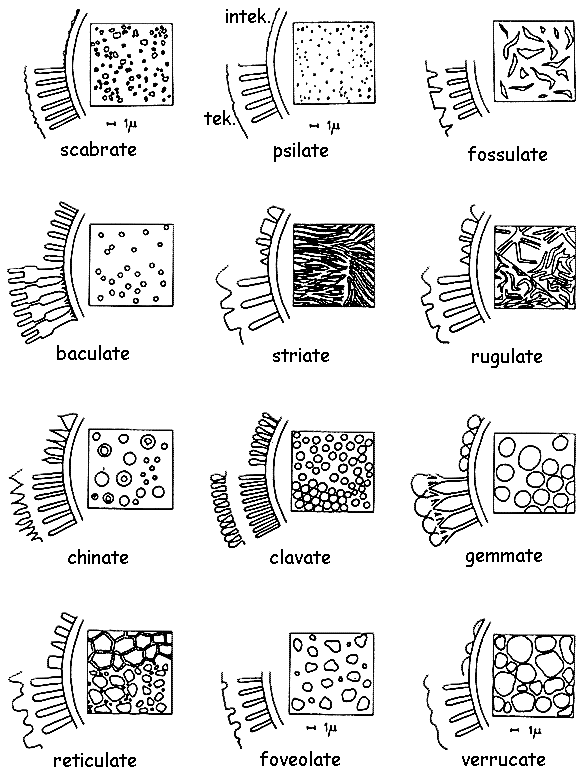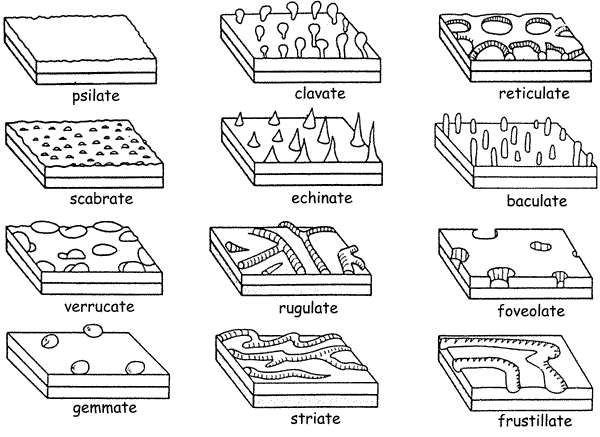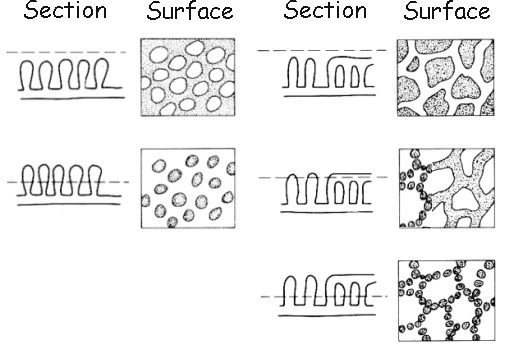






THE SURFACE OF MICROSPORES
Within the pollen-morphological main groups or classes the differences in the structure und sculpturing of the exine of pollen grains are important characteristics for identification. The inner structure of the exine can be either tectate or intectate. The sculpturing of the pollen grain is the ornamentation of the exine surface which can be psilate, foveolate, areolate (frustillate), gemmate, clavate, verrucate, baculate, echinate, rugulate, striate or reticulate.
Different forms of the exine surface

In 3D

Spores do not have a characteristic structuring of the cell walls. Over-view of the woody plants, terrestrial forbs and aquatic plants represented in the pollen-morphological classes
Pollen types
When identifying the three-dimensional surface structure of pollen grains using a light microscope, it is important to focus slowly through the individual layers. The surface types shown in figure 2.5 show this so-called LO-analysis: At high focus the raised elements appear lighter (L=lux; light) while the holes and depressions appear darker (O=Obscuritas; darkness). At low focus the holes and depressions appear lighter than the raised elements which now appear darker.
LO-Microscopy, from P.D. Moore, S. 77, 5.9 figures a and c (without b)
